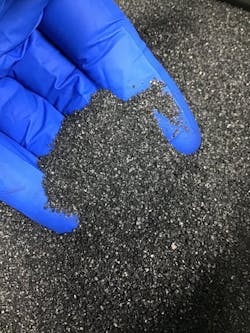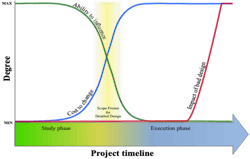Battery material processing and the two approaches to solids handling

The battery production industry is trying to rapidly scale up to meet global energy demands and alleviate dependence on fossil fuels. The industry is currently heavily focused on the production of lithium-ion batteries, but promising new battery technologies such as sodium-ion batteries are also being investigated and their production scaled. Whatever technology is used, there are several processes throughout the battery production chain that require reliable bulk solids and powder handling to avoid process bottlenecks and meet production and product quality and performance goals. For lithium-ion batteries these include:
- Mining critical raw materials for use in a battery cell’s cathode, such as spodumene hard rock as a common lithium source, with large mining capacities in Australia, the Americas, and China.
- Chemical processing to concentrate the material into battery-grade lithium hydroxide (LiOH) and lithium carbonate (Li2CO3) powders.
- Mixing the battery-grade LiOH/Li2CO3 powders with other chemicals such as nickel, cobalt, iron, or phosphorus (which require their own solids handling) to create cathode active materials (CAM).
- Handling materials such as silicon or pet coke (which is used as a carbon source for conversion to graphite), both of which are commonly used powders for battery anodes.
Facilities for refinement to battery-grade chemicals are all over the world. As more and more facilities come online for production of battery-grade chemicals, we are seeing companies across the production chain take wildly different approaches to solids handling. These approaches, which I refer to as “Approach A” and “Approach B,” do not just relate to the battery industry, but to all industries working on new projects.
Companies that take Approach A understand the criticality of taking a little more time in the design and scale-up phase to design and construct solids handling systems right the first time to avoid production bottlenecks at both pilot and commercial scale. Companies that take “Approach B” try to plow ahead with production as fast as possible without taking the time to properly account for the materials’ characteristics in equipment and process design.
Companies taking Approach A spend as much time on the solids handling as they do on the process. Solids handling takes into consideration how the materials will flow through their process, move between process steps without hangups, and arrive to the final step at the particle size, particle-size distribution, and chemical composition intended. They spend the time and money necessary to not only validate their process, but to measure flowability to determine the most appropriate equipment to handle the material.
Flowability tests may include cohesive strength (particle-to-particle strength) for hopper outlet sizing, wall friction (particle-to-surface friction) to design hopper angles for mass flow, compressibility (bulk density as a function of consolidation pressure), and permeability for fine powders. Results are most applicable when the testing matches process conditions (material moisture content, relative humidity, and process temperature). If material changes quickly when removed from the process, on-site testing may be required. If caking is a concern, then other tests such as moisture adsorption and desorption tests may be needed in conjunction with cohesive strength measurements to determine how much strength is gained as a result of moisture changes caused by fluctuating relative humidity.
Approach A companies involve a material handling expert to design and review the process from a flowability perspective. Once a design plan is established, it may require unique handling equipment that requires modeling, prototyping, or equipment vendor trials.
Approach A companies utilize solid design criteria based on their materials’ behavior, eliminating guesswork and minimizing project risk. They take the time to answer questions such as: “Will material flow through the chute, bin, or hopper without plugging or segregation?” and “Will material attrit in the pneumatic conveying system causing it to handle differently in the downstream process or be out of specification?” and “Will relative humidity during transport cause the material to cake?” These efforts put forth by Approach A companies reduce project risk and significantly improve their ability to achieve design capacity upon startup.
Companies taking Approach B fast-track projects by skipping front-end studies. They fail to measure the flow properties of materials to be handled, which would inform the design. They borrow data from library values to try to save the cost of physical testing. They do not test representative samples, and they copy and paste designs. They make many assumptions that, in the long run, end up costing the company dearly. Common phrases companies use to justify their approach include: “We will engineer 90% of the project and figure out the rest upon startup.” and “We don’t have time to test our material.” and “We will just rely on vendors for engineering,” without integrating the systems.
Of these two approaches, Approach A tends to be more successful after equipment startup every time.
Figure 1 illustrates the ability to influence a project design and the cost of modifications throughout the project timeline. Early in the project, the ability to influence the project design is highest and the costs to make changes are lowest. Once the project moves through scope freeze, that switches, and the cost of changes increases and the ability to make changes decreases as equipment is built. However, the effect of a poor design tends to go unnoticed until startup. Companies taking Approach A put the time and money in to reduce project risk early and consistently benefit from this approach.
As an engineering firm specializing in solids handling, Jenike & Johanson primarily deals with battery clients (as well as clients in other industries) that fall into the Approach A category. They understand how much solids handling problems could cost them, and how much more difficult flow problems can be to fix once production has started. They want to avoid flow stoppages and powder caking, eliminate throughput-rate limitations with the extremely fine powders they are handling to ensure powder uniformity within the cell (since powder variability can cause poor cell performance), and prevent metal contaminants (often down to the parts-per-billion level).
However, as more battery plants try to quickly come online and scale up production, an increasing number of clients are falling into the Approach B category. They are coming to us for help after experiencing significant bottlenecks due to poor powder flow, and these bottlenecks are severely hampering their ability to manufacture product. Since they are already making at least some product, it becomes far more challenging and impactful to their bottom line to make changes.
Whether your company handles battery materials or any other bulk solids, using Approach A and involving solids handling experts early in the design process can help you avoid the headaches and costly changes down the road that are so often associated with Approach B.
Carrie Hartford, P.E., MBA, Director of Business Development, works for Jenike and Johanson designing bins, silos, feeders, and transfer chutes to solve challenging material handling problems for clients in all industries. She teaches courses and gives technical presentations all over the world regarding the science of material handling and storage.
Jenike & Johanson
www.jenike.com
About the Author

Carrie Hartford
Carrie Hartford, P.E., MBA, is director of business development at Jenike and Johanson. Her work involves designing bins, silos, feeders, and transfer chutes to solve challenging material handling problems for clients in all industries. She teaches courses and gives technical presentations all over the world regarding the science of material handling and storage.

